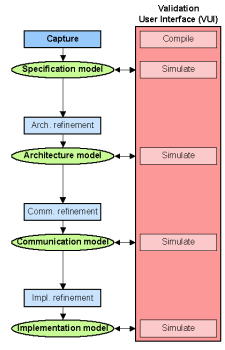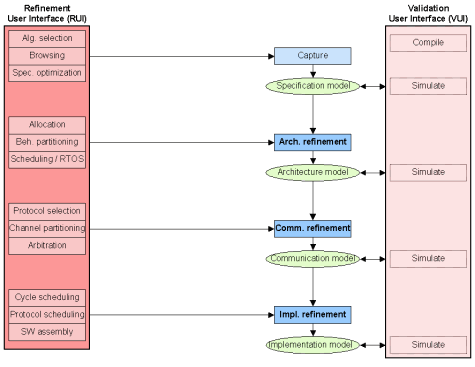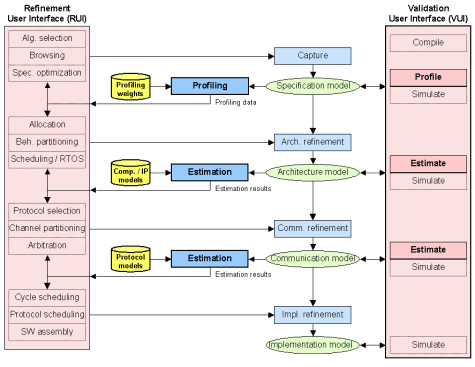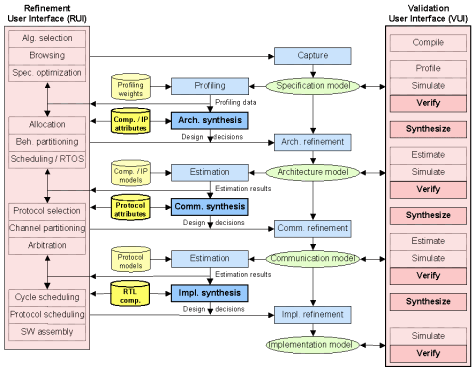



|
|
Modeling Engine
|
Four different general tool sets can be envisioned around the SoC
methodology, forming SoC system-level design flows with varying
degrees of interactivity, automation and complexity.
At the core of the SoC methodology
are four models at four levels of abstraction from specification
down to implementation.
Therefore, the first part of the SoC design flow is a simple
modeling engine
that allows the designer to compile, simulate and refine the four SoC
models. The compilation and simulation of models are automatic. However,
the designer is required to refine the models manually, following the
refinement rules. The equivalence of original and refined models can be
demonstrated through simulation and validation.
| |

|
|
|
Refinement Engine
|

|
The refinement engine allows
designers to automatically refine the
models by making decisions through the refinement user interface
(RUI) and using refinement tools.
In this case, the designer is required to write only one model: the
specification model, which is the easiest one to write since it is void of
any implementation details. This model becomes the golden model, and all
other models are derived from it. The specification model, with all design
decisions stored, represents the complete synthesis flow and can be repeated
anytime, anywhere or modified for different markets or different technologies.
|
|
|
Exploration Engine
|

|
The exploration engine incorporates
additional profiling and estimation tools to allow designers to make
better decisions. The tools must be accompanied by databases with proper
component and protocol models needed
for estimation of different metrics. On the other hand, if models are not
available, the designers can write those models themselves. Most of the
models can be represented by tables that designers must compile for
insertion of a new component into the database.
|
|
|
Synthesis Engine
|

|
The synthesis engine includes synthesis tools for architecture,
communication and implementation. All or any number of synthesis tools can
be included. For example, if the architecture is fixed, such as in a
platform design, the architecture synthesis tool can be omitted. Similarly,
if only a standard bus is used, the communication synthesis is not required.
Furthermore, if no custom hardware is needed, the implementation synthesis
can be substantially simplified.
|
|
|



